The global centrifugal pump market was valued at USD 39.7 billion in 2023 and projected to grow by USD 51.5 billion by 2028, driven by its essential role in sectors like water treatment, oil and gas, and chemical processing. In many of these systems, suction conditions are unpredictable, making pump selection critical to uptime and safety.
Among the options, Self priming and Non self priming centrifugal pumps are widely used but serve different purposes. While both move fluids using the same basic principle, their air-handling ability, installation needs, and suitability for variable operating conditions vary, making it vital to choose the right one for your setup.
This guide compares the structure, functionality, and use cases of Non self priming and Self priming centrifugal pumps, offering clarity for professionals tasked with selecting or maintaining industrial pumping systems.
Key Takeaways:
- Non self priming centrifugal pumps require a flooded suction or manual priming before startup.
- Self priming centrifugal pumps evacuate air by recirculating liquid within a dedicated priming chamber that mixes and expels air-liquid mixtures until suction line air is cleared.
- Selection should consider suction lift, fluid characteristics, start-stop frequency, and maintenance accessibility.
- Applications like dewatering, lift stations, and intermittent-flow systems benefit from Self priming designs, while flooded setups often favor Non self priming models.
To make the right choice, it’s important to start with the fundamentals of non self priming centrifugal pumps.
What Are Non self priming Centrifugal Pumps?
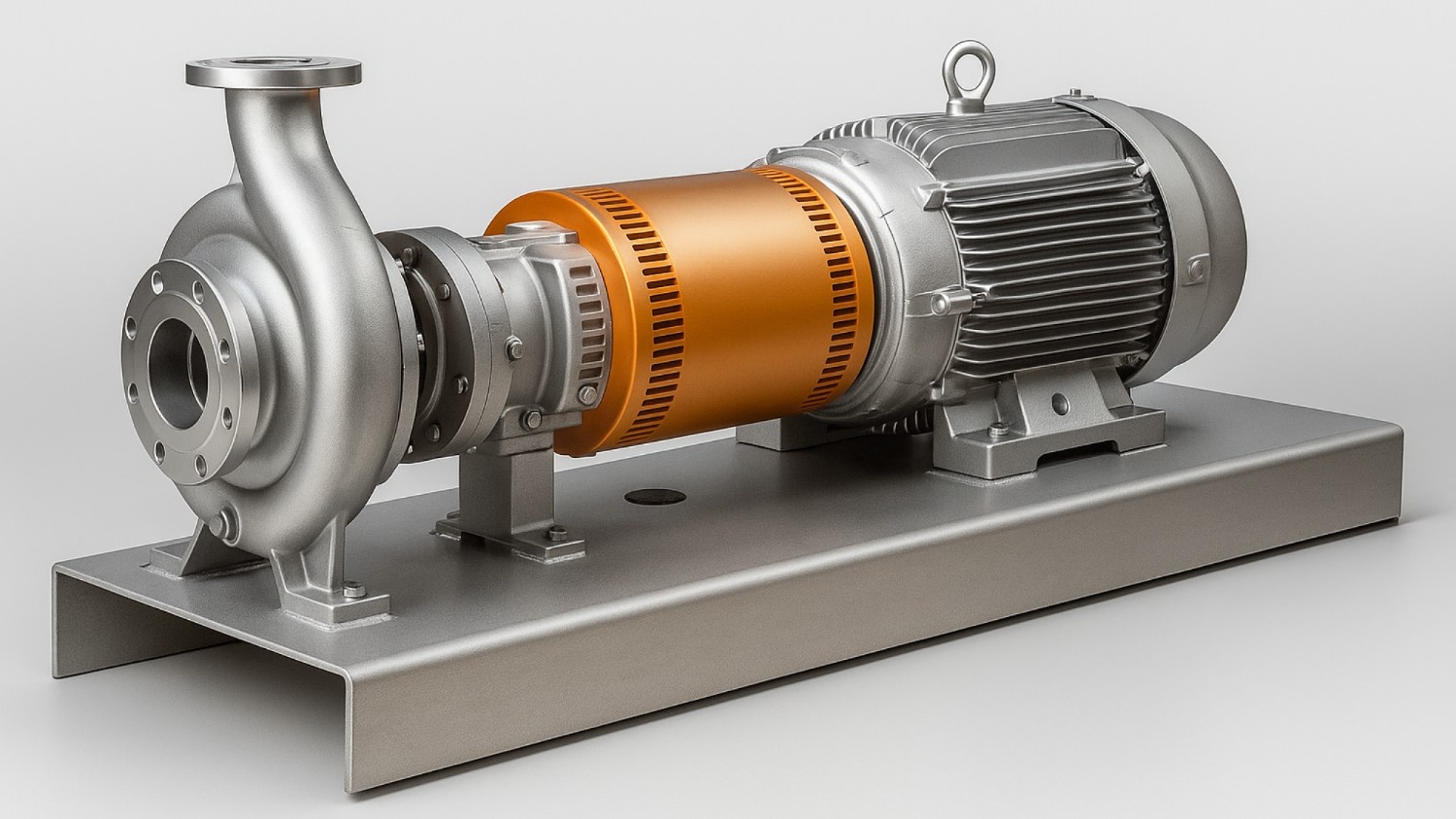
A Non self priming centrifugal pump is built to operate only when its casing and suction line are fully filled with liquid. It cannot evacuate air on its own, making it unsuitable for systems where dry starts or air pockets are common. Continuous liquid availability at the inlet is essential for proper functioning.
How It Works:
- Flow Mechanism: Fluid enters through the impeller eye and is accelerated outward by centrifugal force. This velocity is converted into pressure in the volute casing to push liquid through the discharge.
- Priming Dependency: Must be primed externally to create suction. If air is present in the suction line, the pump loses its ability to generate suction and will not operate effectively.
Installation and Structural Overview:
Non self priming pumps are usually installed in flooded suction setups, where the pump is placed below the fluid source. This ensures constant liquid availability at the inlet.
- Casing Type: Volute or diffuser
- Impeller Design: Enclosed or semi-open (material: CI, SS316, bronze)
- Bearings: Grease- or oil-lubricated rolling element bearings
- Seal Options: Gland packing or mechanical seal (single/double)
- Mounting Configuration: Close-coupled or frame-mounted
- Installation Setup: Always below liquid level (flooded suction)
- Max Suction Head: Typically up to 5–6 meters when flooded
- Discharge Head Range: Up to 150 meters, depending on stages and impeller size
Common Applications:
Ideal for systems where fluid is continuously available and suction conditions are stable. Typical industries and applications include:
- Industrial process cooling systems
- Chemical processing with low-viscosity fluids
- Water circulation in HVAC and boiler feed systems
- Effluent discharge with minimal solids
- Tank-to-tank fluid transfer in agriculture or utilities
Key Advantages:
- High hydraulic efficiency due to unobstructed internal flow paths
- Simplified design allows for easier repairs and lower CAPEX
- Reduced maintenance in well-controlled installations
- Lower energy consumption than Self priming models in wet-run conditions
Limitations:
- Manual priming required during startup or post-maintenance
- Vulnerable to dry running, which can cause impeller or seal damage
- Not suitable for variable-level tanks or applications prone to suction loss
When installed under the right conditions, Non self priming centrifugal pumps offer reliable performance and reduced maintenance for a wide range of fluid handling tasks.
What Is a Self priming Centrifugal Pump?
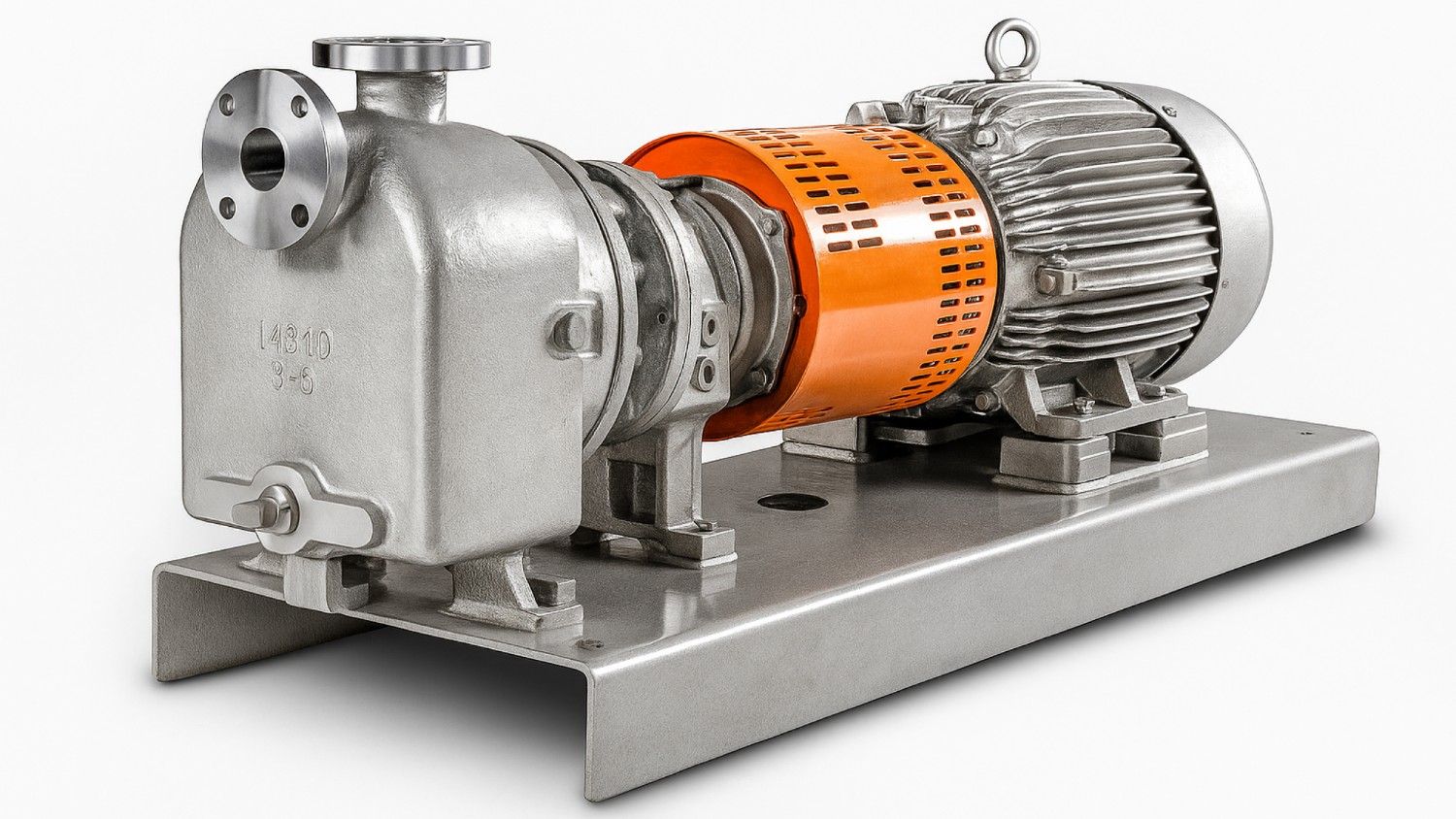
A Self priming centrifugal pump is designed to evacuate air from the suction line on its own, allowing it to start and restart without manual priming. It combines the performance of a standard centrifugal pump with added design features that enable automatic priming when air or gas is present in the suction path.
How It Works:
- Air-Liquid Separation Mechanism: The pump recirculates stored liquid in the casing to mix with air from the suction line. This air-liquid mixture is discharged, while the fluid is retained for continuous recirculation until all air is cleared.
- Re-Priming Capability: After air evacuation, the pump achieves a full prime and operates like a standard centrifugal pump. If turned off, it can restart without manual re-priming as long as some liquid remains in the priming chamber.
Structural and Performance Specifications:
- Casing Design: Oversized volute with a dedicated priming reservoir designed to trap a sufficient volume of fluid for recirculation.
- Impeller Type: Typically semi-open or enclosed, constructed from corrosion- and abrasion-resistant materials such as SS316, bronze, or Hastelloy.
- Seal Configuration: Available with single or double mechanical seals or packed glands to handle varying pressure and temperature ranges.
- Bearings and Shaft: Heavy-duty shafts with sealed or grease-lubricated ball or roller bearings designed for high radial load capacity and extended service intervals.
- Suction Lift Limit: Efficient up to 6 to 8 meters depending on temperature, altitude, and suction line condition.
- Flow and Head Range: Flow capacities from 5 m³/hr to over 1,200 m³/hr, and discharge heads reaching up to 90 meters.
- Mounting Setup: Can be baseplate-mounted or monoblock (close-coupled) for easier alignment and compact layout.
Common Applications:
Self priming centrifugal pumps are ideal where suction conditions are unpredictable or access to the fluid source is limited. Typical applications include:
- Effluent pumping from sumps and underground tanks where flooding the suction line is not feasible
- Mobile fuel or chemical transfer systems that require frequent relocation and startup
- Sludge and slurry recirculation in wastewater units, where suspended solids might cause air pockets
- Irrigation systems operating from canals or reservoirs with fluctuating water levels
- Boiler feed and condensate return lines in utility plants where startup cycles are frequent
- Industrial cleaning systems requiring stop-start operations without manual oversight
Advantages:
- Auto-start convenience: Can restart without manual priming after power loss or shutdowns.
- Versatile positioning: Allows above-liquid installations without performance loss, reducing civil work and space requirements.
- Saves downtime: Reduces manual intervention during restarts or system interruptions.
- Handles air entrainment: Designed to function efficiently even with moderate air content in the line.
Limitations & Considerations:
- Initial fill is mandatory: The pump must be filled with liquid before its first operation.
- Suction line integrity: Air leaks can compromise priming, so suction piping must be airtight and properly sized.
- Moderate efficiency trade-off: Slightly lower hydraulic efficiency compared to Non self priming pumps due to additional internal flow paths.
- Periodic inspection: Requires more frequent maintenance than Non self priming units, especially if handling abrasive or high-temperature fluids.
Self priming centrifugal pumps offer a balance between operational autonomy and installation flexibility. When specified correctly, they support uninterrupted fluid movement in systems where flooded suction cannot be guaranteed.
With a clear understanding of how each pump functions, you can now compare self priming and non self priming centrifugal pumps across performance and application.
Self priming vs Non self priming Centrifugal Pumps
Both Non self priming and Self priming centrifugal pumps rely on rotational motion to move fluids, but their startup behavior, installation needs, and functional design vary greatly. If your system has a consistent flow source with stable inlet pressure, the standard centrifugal model works well.
On the other hand, if air pockets, intermittent flow, or elevation differences are part of the equation, a Self priming unit offers better operational resilience.
Here’s a side-by-side breakdown to help you assess which pump fits your specific site conditions:
After reviewing their key features and use cases, the next step is to determine which type of centrifugal pump is better suited for your specific operation.
Self priming vs Non self priming Centrifugal Pumps: Which is Better?
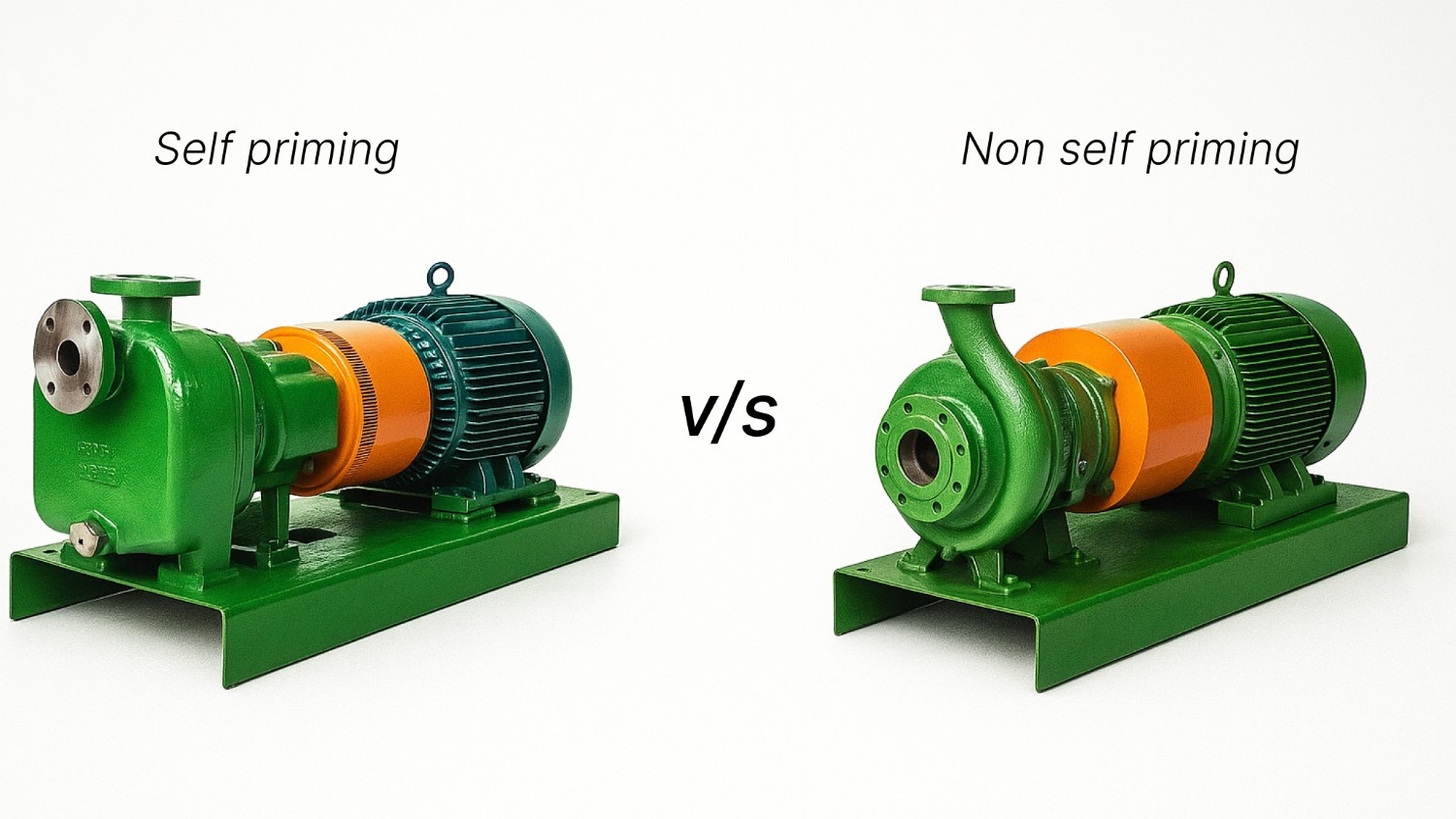
As an industry leader, you don’t base pump selection on price alone. You consider real-world factors like suction conditions, fluid type, maintenance access, and installation layout. Choosing between a self-priming and non-self-priming centrifugal pump comes down to what works best for your system’s efficiency, reliability, and long-term operation.
When to Choose a Self priming Centrifugal Pump:
- The fluid source is below pump level, and the system requires suction lift without relying on foot valves or external priming devices.
- Suction lines are exposed to air ingestion due to intermittent flow, tank refilling, or empty pipelines at startup.
- Installation is above ground or in a location where flooded suction isn’t possible due to terrain, tank height, or mobility needs.
- Maintenance staff need the ability to inspect, clean, or service pumps without dismantling suction piping or accessing confined pits.
- Applications involve slurry, sludge, or particulate-laden fluids where clog-resistant and solids-handling non-metallic pump designs are essential.
- The system operates intermittently (batch-wise) such as in effluent lift stations, tanker unloading, utility flushing, or dosing systems.
- There's no reliable infrastructure or trained manpower to consistently handle manual priming after shutdowns.
- Projects require fast deployment or mobile pumping setups in utilities, construction, or emergency applications.
When to Choose a Non self priming Centrifugal Pump:
- The pump operates with flooded suction, where the liquid source is above the impeller. This condition suits centrifugal process pumps used in closed or inline systems.
- The system provides continuous, stable flow without air ingestion. This applies to centrifugal pumps in water treatment, chemical pump suppliers, and general industrial processes.
- High energy efficiency is important. Energy efficient chemical pumps perform better under fully primed conditions, without internal recirculation losses.
- Priming can be managed manually or with external assistance. This works for ANSI-Compliant centrifugal pumps or systems from centrifugal pumps.
- The fluid is clean or lightly contaminated. Cast iron centrifugal pumps, stainless steel centrifugal pumps, and metallic Pumps are often used in such environments.
- The plant has infrastructure or experienced staff to manage priming and shutdown procedures. These conditions make industrial centrifugal pump usage more predictable.
- The pump is located in a sump or below-grade area, ensuring the suction line is always filled. This setup is common in acid handling pumps and toxic fluid pumps.
- Mechanical simplicity and long-term cost savings are priorities. Models like sealless centrifugal pump, double impeller centrifugal pump, or inline centrifugal pump offer these benefits.
Evaluating centrifugal pump options? See how self priming and non self priming types align with your process requirements and site conditions. Explore here.
Chemitek: Choose the Right Centrifugal Pump for Your Use
At Chemitek Process Equipment Pvt. Ltd., we understand that choosing between Self priming and Non self priming centrifugal pumps is more than just an installation decision. It directly impacts system reliability, uptime, and energy consumption. Our engineering team carefully reviews suction conditions, system layout, and NPSH requirements to recommend the most suitable solution.
If your process needs the efficiency of a Non self priming pump or the versatility of a Self priming design, Chemitek offers both, built to handle challenging wastewater and industrial applications. Each pump is backed by performance-tested engineering, wear-resistant internals, and durable materials such as SS316, Hastelloy, and PVDF.
Planning an upgrade or new installation? Speak with our team for expert advice tailored to your plant's flow demands and operating conditions.
FAQs
1. Why can’t Non self priming centrifugal pumps start with an empty suction line?
Because they lack an internal air-handling mechanism, Non self priming pumps cannot remove air from the suction line. Air blocks fluid entry, preventing the impeller from generating flow, which is why they need a flooded suction or manual priming before startup.
2. Can Self priming centrifugal pumps run continuously like standard pumps?
Yes. Once primed and operating under stable flow, Self priming pumps function the same as Non self priming models. Their Self priming feature is only active during startup or re-priming after a shutdown.
3. Is there a difference in installation complexity between the two?
Yes. Self priming pumps can be installed above the fluid source without special piping arrangements, making layout easier. Non self priming pumps often require more precise alignment and elevation to maintain a flooded suction.
4. Are there noise or vibration differences between the two pump types?
Self priming pumps may produce slightly more noise during the priming phase due to air-liquid interactions. Once fully primed, both types operate similarly, though installation factors and pump base design can influence vibration levels.
5. Which industries rely more heavily on Self priming pumps?
Industries like wastewater, construction dewatering, agriculture, and marine rely on Self priming pumps due to frequent fluid level fluctuations, intermittent duty cycles, and need for above-grade installation.
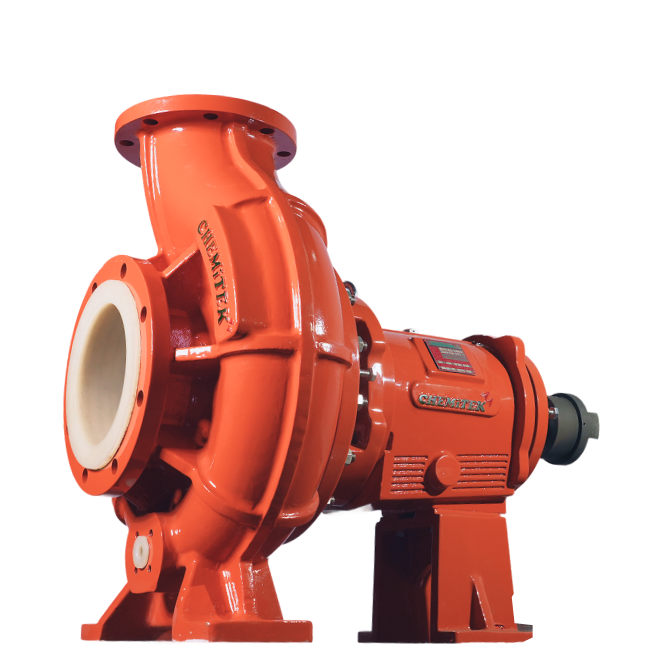
Latest posts
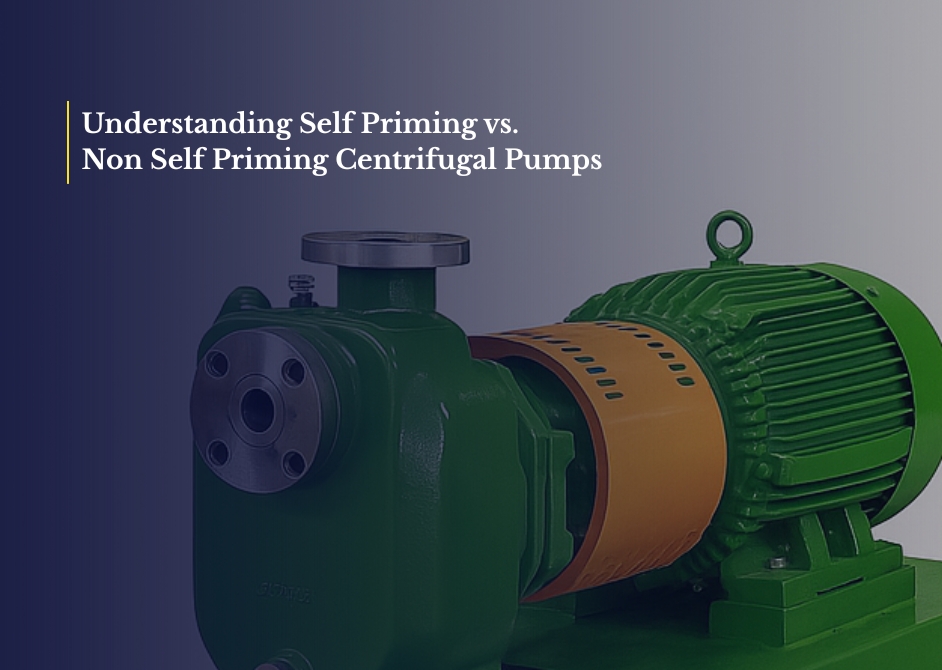
Understanding Non-Self Priming Centrifugal Pumps vs. Self-Priming
Ready to Upgrade Your Process Operations?